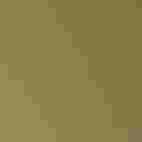Ruby-crowned Kinglet
At a Glance
This tiny bird is often hard to see in summer, when it lives high in tall conifers. In migration and winter, however, it often flits about low in woods and thickets, flicking its wings nervously as it approaches the observer. When it is truly excited (by a potential mate, rival, or predator), the male may erect his ruby-red crown feathers, hidden at other times. The song of the Ruby-crown is jumbled and loud, all out of proportion to the size of the bird.
All bird guide text and rangemaps adapted from Lives of North American Birds by Kenn Kaufman© 1996, used by permission of Houghton Mifflin Harcourt Publishing Company. All rights reserved.
Category
Kinglets, Perching Birds
IUCN Status
Least Concern
Habitat
Desert and Arid Habitats, Forests and Woodlands, High Mountains, Saltwater Wetlands, Shrublands, Savannas, and Thickets, Tundra and Boreal Habitats, Urban and Suburban Habitats
Region
Alaska and The North, California, Eastern Canada, Florida, Great Lakes, Mid Atlantic, New England, Northwest, Plains, Rocky Mountains, Southeast, Southwest, Texas, Western Canada
Behavior
Direct Flight, Flitter, Rapid Wingbeats
Population
100.000.000
Range & Identification
Migration & Range Maps
Migrates a little earlier in fall and later in spring than Golden-crowned Kinglet. In many areas, peak migration periods are October and April.
Description
4" (10 cm). Tiny, short-tailed, with wing-flicking action, bold white eye-ring. Wings usually show one strong white wing-bar, with a black bar just behind it. Male's ruby crown patch is raised only in excitement. Empidonax flycatchers are more upright, longer-tailed. Compare to Hutton's Vireo.
Size
About the size of a Sparrow
Color
Black, Gray, Green, Red, White
Wing Shape
Rounded
Tail Shape
Notched, Short, Square-tipped
Songs and Calls
Song an excited musical chattering.
Call Pattern
Complex, Flat, Undulating
Call Type
Buzz, Chirp/Chip, Hi, Whistle
Habitat
Conifers in summer; other trees and brush in winter. Breeds in coniferous forest, including those of spruce, fir, Douglas-fir, and some pine woods. Winters in a wide variety of habitats, mainly in open deciduous woods, also in coniferous and mixed woods, mesquite brush, streamside thickets.
Sign up for Audubon's newsletter to learn more about birds like the Ruby-crowned Kinglet
Behavior
Eggs
7-8, sometimes 4-9. In Pacific Northwest, 9-10 eggs, sometimes 7-12, a remarkably large clutch for small size of bird. Eggs whitish to pale buff, with brown spots often concentrated at larger end. Incubation is by female only, about 13-14 days. Male may feed female during incubation.
Young
Both parents feed nestlings. Young leave nest about 16 days after hatching. 1 brood per year.
Feeding Behavior
Forages actively at all levels, from treetops to low brush, examining foliage, twigs, and major limbs for foods. Often hovers while taking items from foliage, and sometimes flies out to catch insects in mid-air. Compared to Golden-crowned Kinglet, does more hovering and flycatching, less hanging on twigs.
Diet
Mostly insects. At all seasons, diet is primarily small insects, the birds concentrating on whatever is most readily available; includes many small beetles, flies, leafhoppers, true bugs, caterpillars, and many others. Also eats spiders and pseudoscorpions; diet includes eggs of insects and spiders. In winter, also eats some berries and seeds. Sometimes takes oozing sap or visits flowers, possibly for nectar.
Nesting
In courtship, male may crouch horizontally, fluttering wings and raising red crown feathers while singing. Nest: Usually in spruce, sometimes in other conifer; nest averages about 40' above ground, can be up to 90', or very low in far northern forest where trees are short. Nest is attached to hanging twigs below a horizontal branch, well protected by foliage above. Female builds deep hanging cup of moss, lichens, bark strips, spiderwebs, twigs, rootlets, and conifer needles, lined with feathers, plant down, animal hair.
Conservation
Conservation Status
Populations rise and fall, with many apparently being killed during exceptionally harsh winters. Overall, however, species is widespread and common.
Climate Threats Facing the Ruby-crowned Kinglet
Choose a temperature scenario below to see which threats will affect this species as warming increases. The same climate change-driven threats that put birds at risk will affect other wildlife and people, too.











